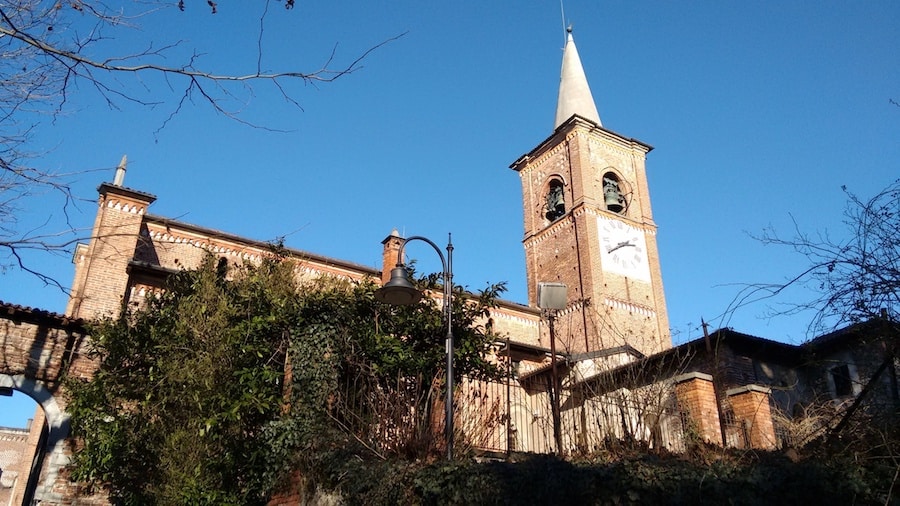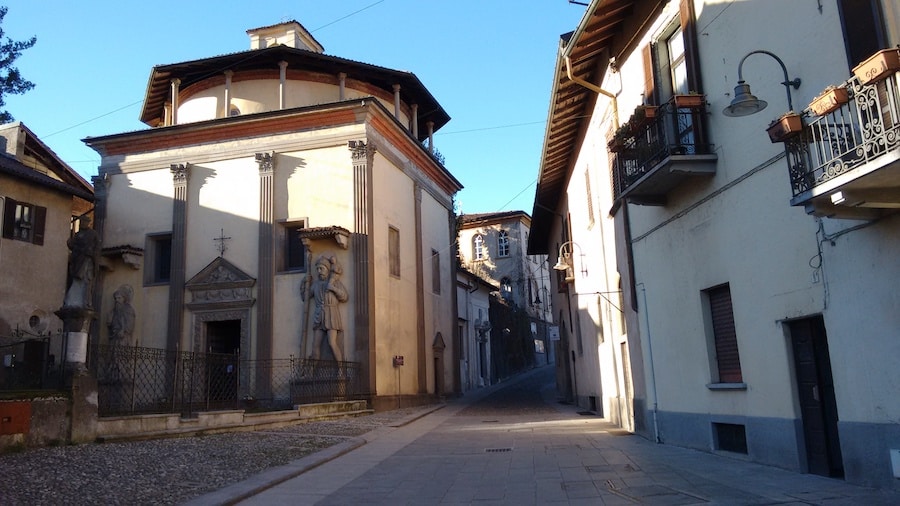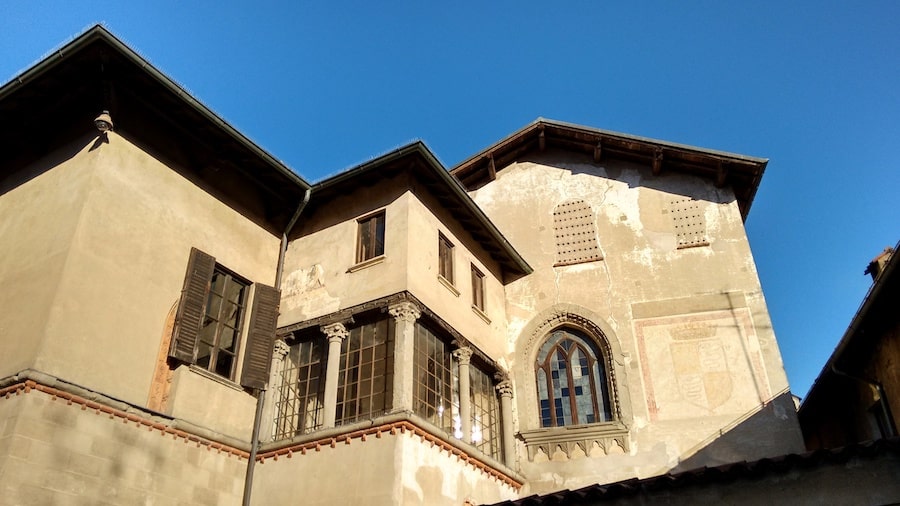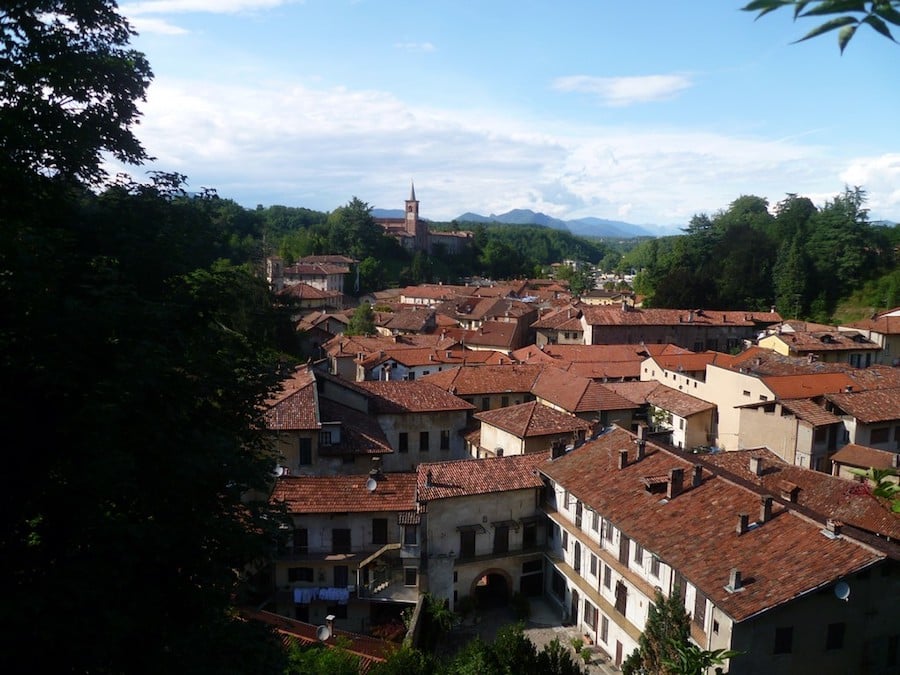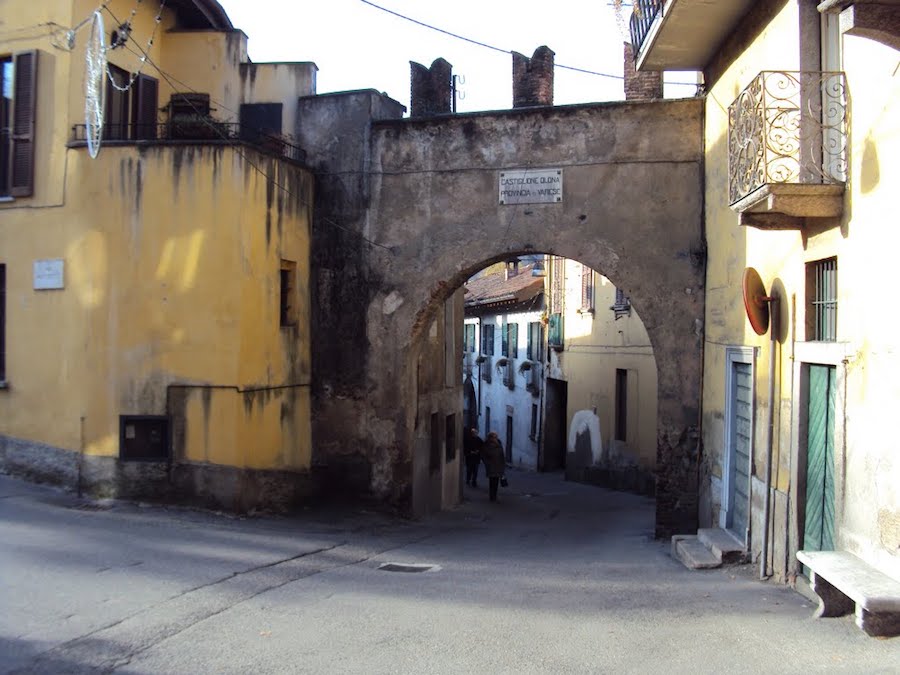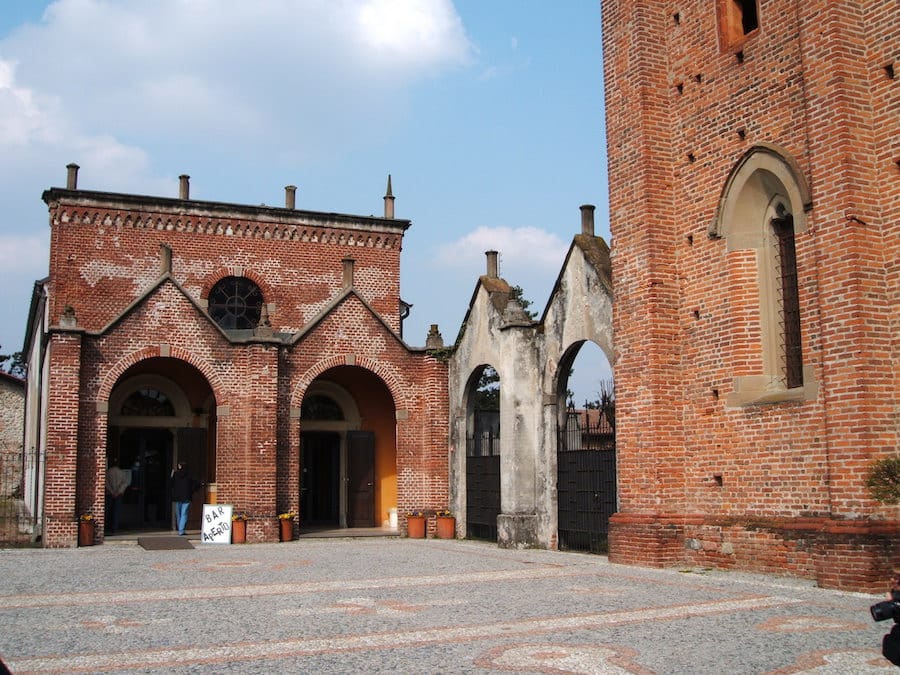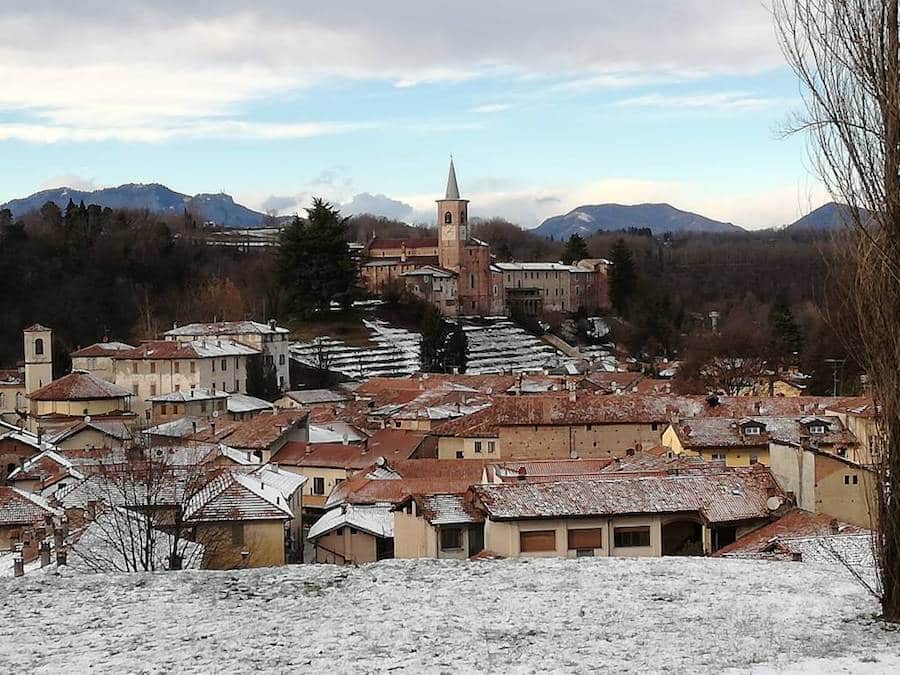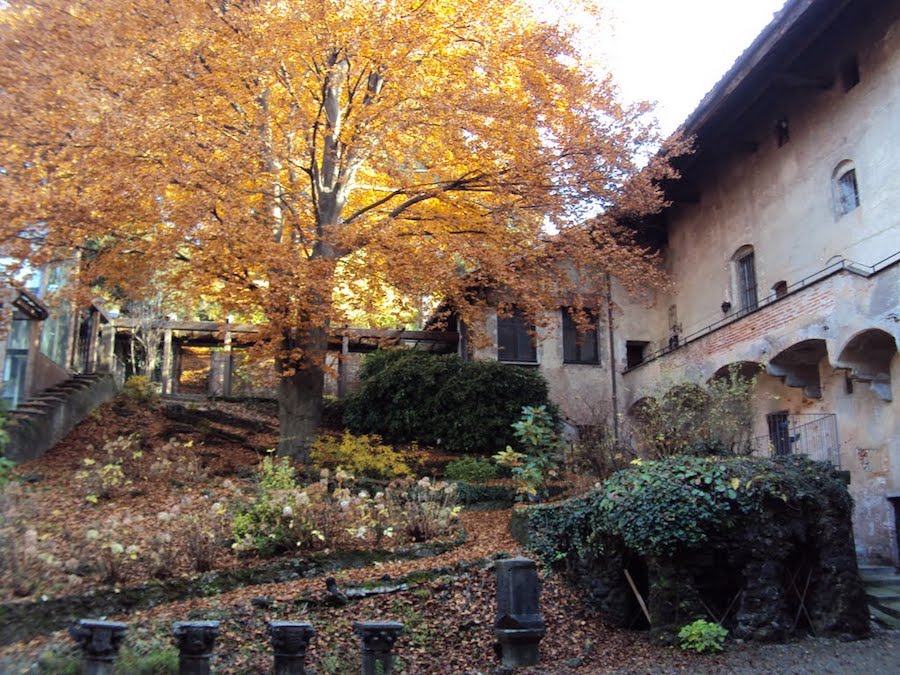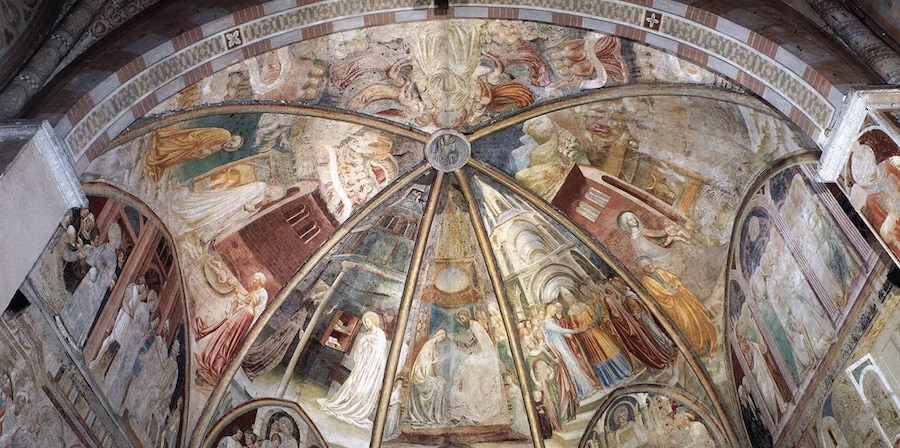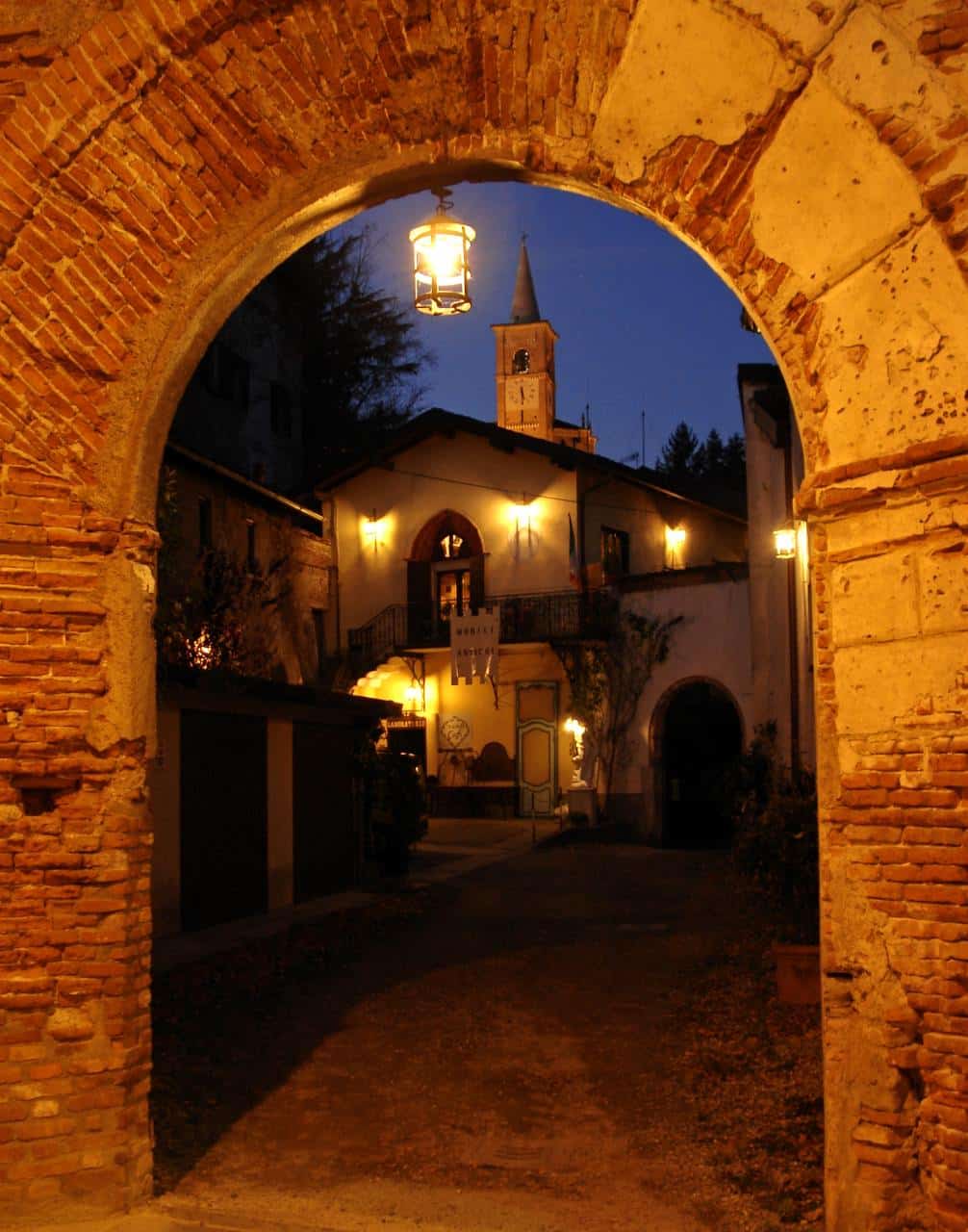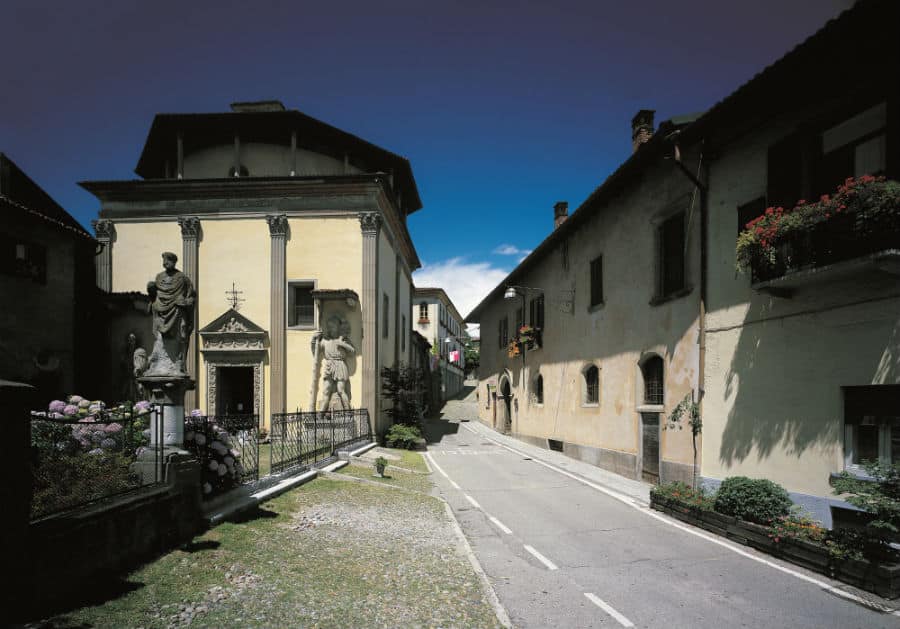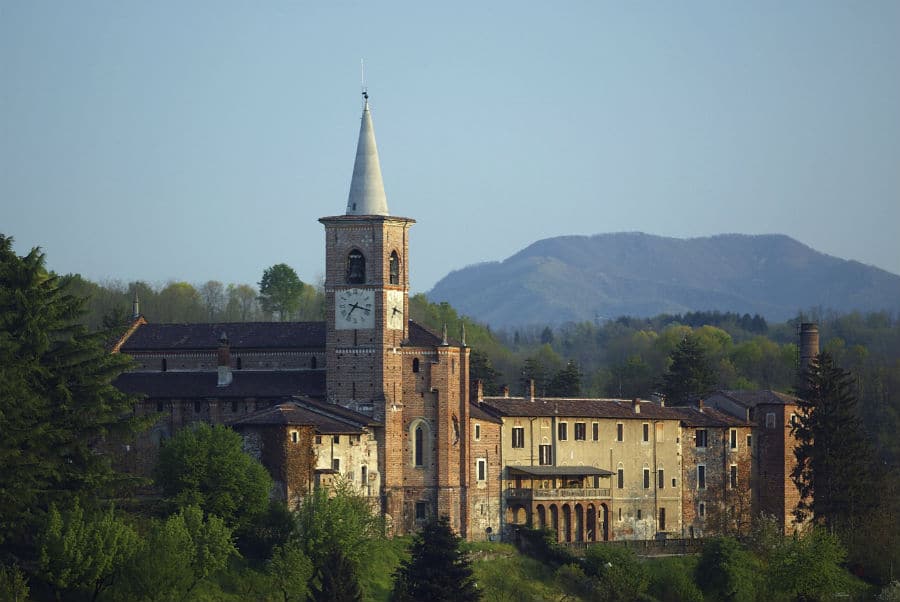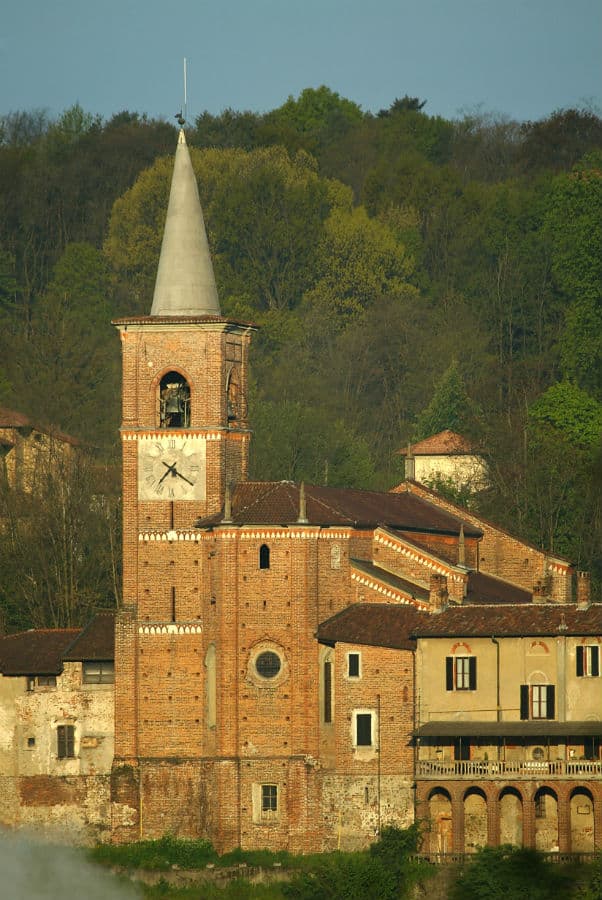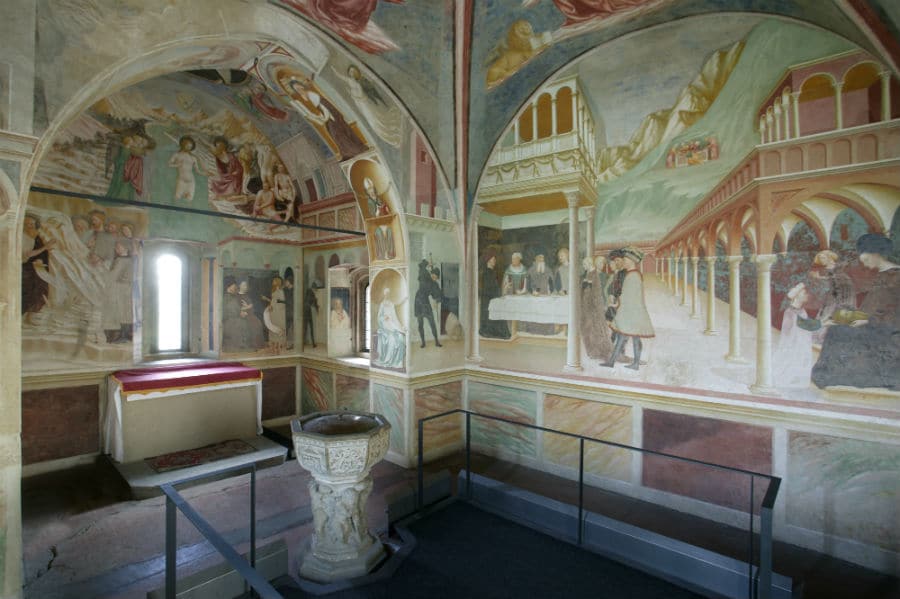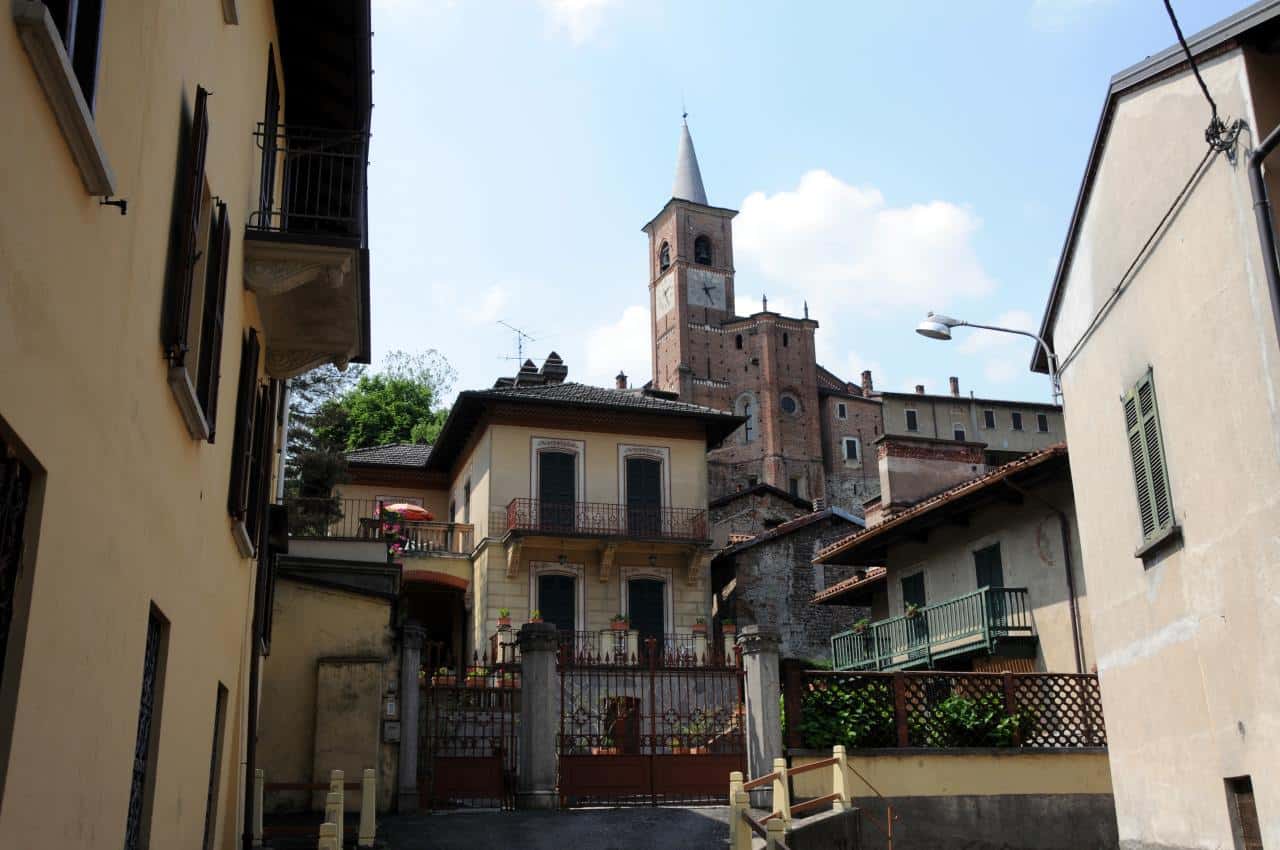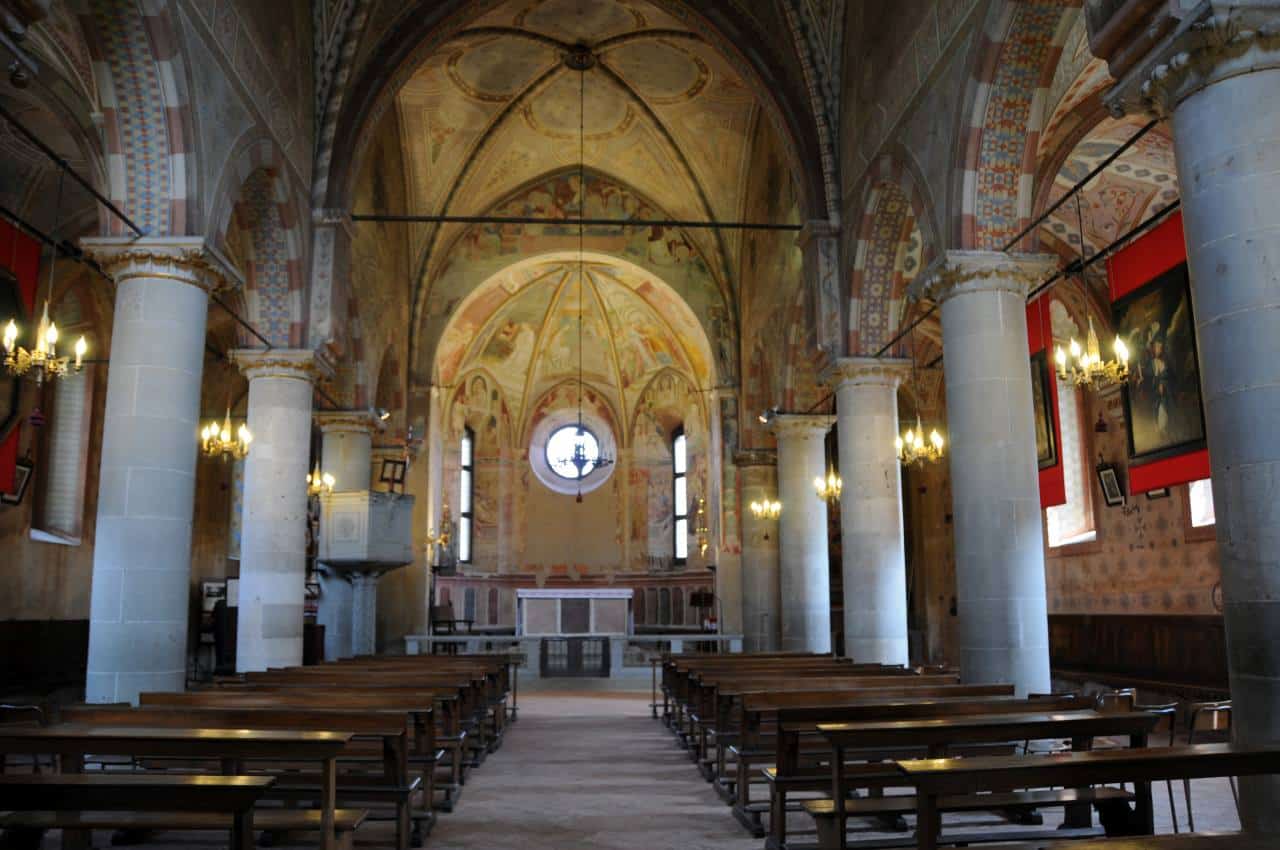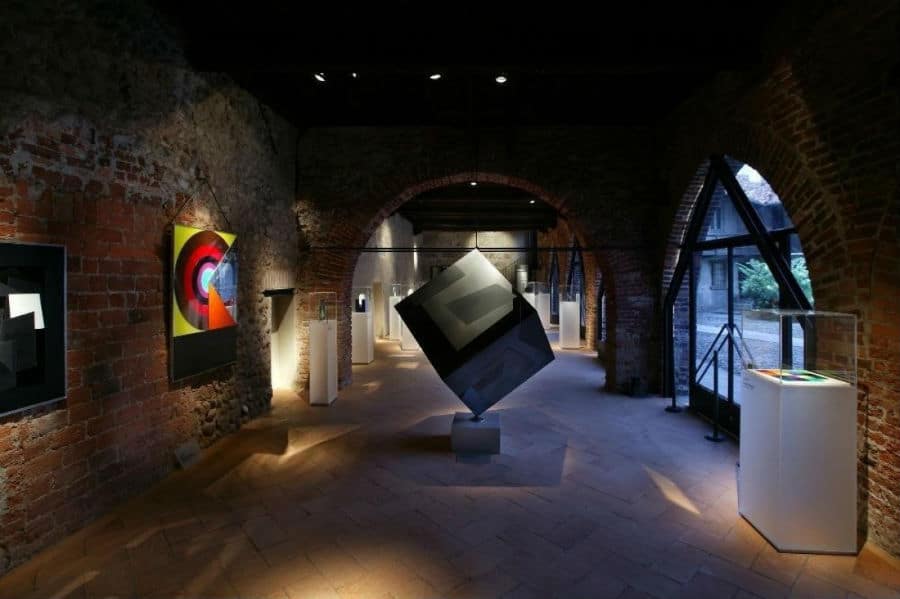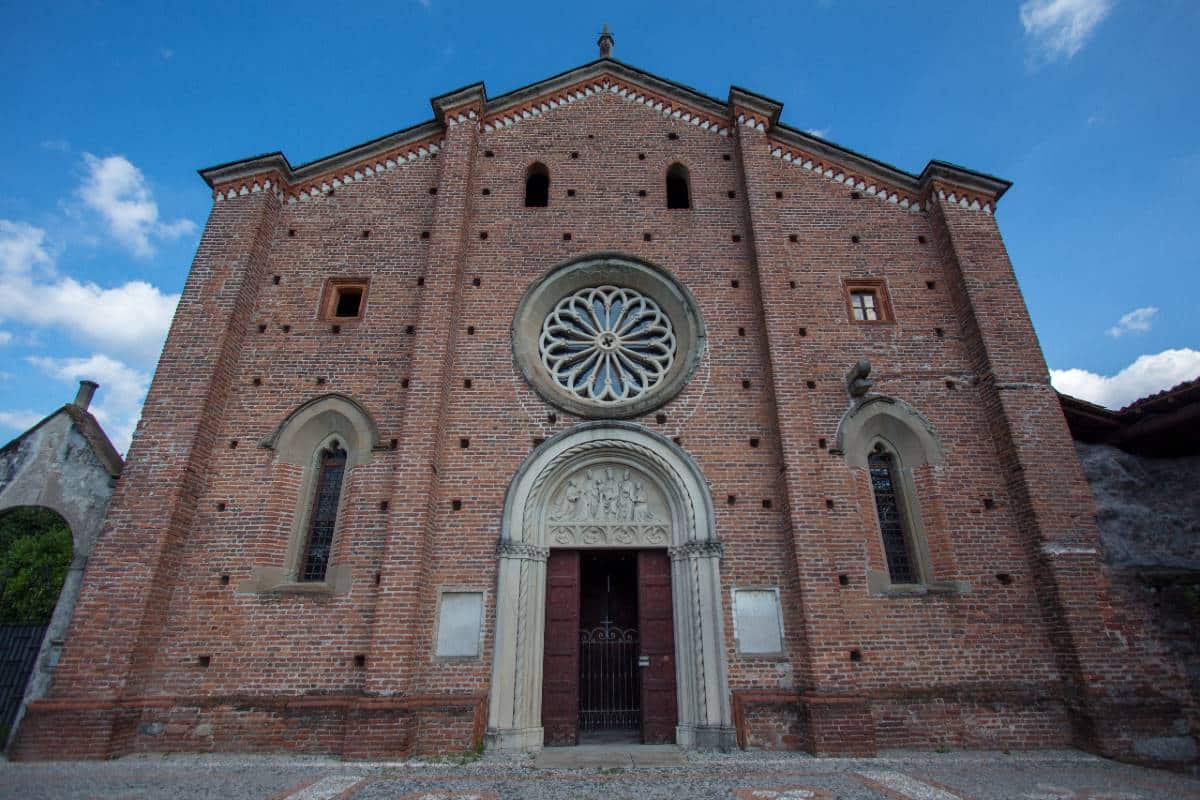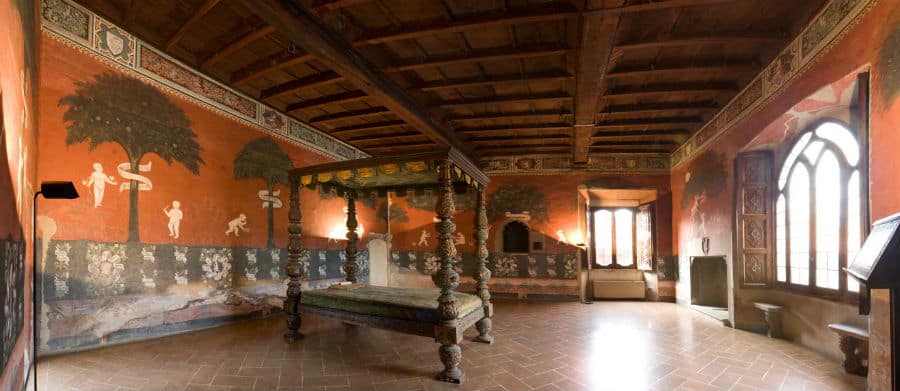The village of Castiglione Olona, nicknamed "Tuscany Island in Lombardy", has a very ancient history. Originally a Roman castrum, it was later the scene of clashes between the Visconti and Torriani families for control of the territory located on the banks of the Olona River.
There are many theories as to why Castiglione Olona is called "the Island of Tuscany in Lombardy." According to some sources, this term was coined by Piero Chiara, while for others it is attributed to Gabriele d'Annunzio because of the architecture of the red brick houses and the urban layout reminiscent of the Tuscan Renaissance. Still others associated it with Tuscany because of the presence of famous Tuscan painters such as Lorenzo di Pietro known as Vecchietta and Paolo Schiavo. For many, however, the credit for this definition goes to Cardinal Branda Castiglioni, who promoted "Tuscan humanism in Lombardy."
Walking through the streets of the village and observing it from above, it is hard not to feel the atmosphere of beautiful Tuscany.
A visit to the village can begin at the central Villa or Body of Christ Church, an excellent example of humanistic architecture with a cylindrical tiburium. Inside you can admire works dating back to the 15th century. The park in front of Monteruzzo Castle, once a 19th-century villa, now offers a beautiful view of the Olona Valley and the entire Varese village.
Just past the entrance gate to the small town of Varese on Via Roma is a 14th-century medieval courtyard. Next to this court is the Palazzo Clerici, built in the 15th century. Inside Castiglione Olona's medieval court is the Museum of Plastic Art, housed in the splendid frescoed rooms of the 14th-century Palazzo dei Castiglioni di Monteruzzo. The museum features a collection of fifty works created in the 1970s.
In the village's main square, Piazza Garibaldi, is the Museo Civico Palazzo Branda Castiglioni, once the home of Cardinal Branda Castiglioni. Inside are frescoes by Tuscan masters Masolino and Vecchietta, along with works by Lombard painters. It was Cardinal Branda Castiglioni who transformed Castiglione Olona into the first example of "Tuscan humanism" in Lombardy, starting in 1421. The palace remained in the Castiglioni family's ownership for a long time, until Count Lodovico Castiglioni sold part of the residence in 1980 to the Municipality of Castiglione Olona, which restored it and turned it into a Civic Museum.
Also located in Piazza Garibaldi is the Church of the Most Holy Body of Christ, known as the Church of Villa because of its location in the town's village. It was built by Cardinal Branda Castiglioni and designed by Vecchietta, who was inspired by Brunelleschi's style-a real novelty for that period and for the area of Milan, usually characterized by late Gothic art. Two imposing statues on the facade represent St. Anthony, protector of animals, and St. Christopher, protector of rivers.
Walking along Via Cardinale Branda, one can admire the castle and pass the ruined gate to reach a large square where stands the splendid Collegiate Church, a true jewel of the town. Built in 1425 by three architects from Canton Ticino, the Solari brothers, the church recalls the style of Lombard Roman architecture with its exposed brickwork, gabled facade and arch of terracotta arches. Inside, however, the sculptures are made of sandstone from quarries in the nearby town of Malnate. The interior is magnificent, with frescoes by three Tuscan artists. On the vaulted ceiling, painted by Masolino da Panicale, events from Mary's life are depicted; the characters follow the architectural lines while the delicacy of their faces and the intensity of the colors enchant visitors.
Leaving the church and skirting the rectory, a two-story building much ruined inside, is the Baptistery. Its walls and vaults were beautifully frescoed by Masolino and considered his masterpiece. Don't miss the opportunity to also visit the Museo della Collegiata, where surviving objects from the thefts and fires that affected the treasures donated by the cardinal to the church are preserved.


